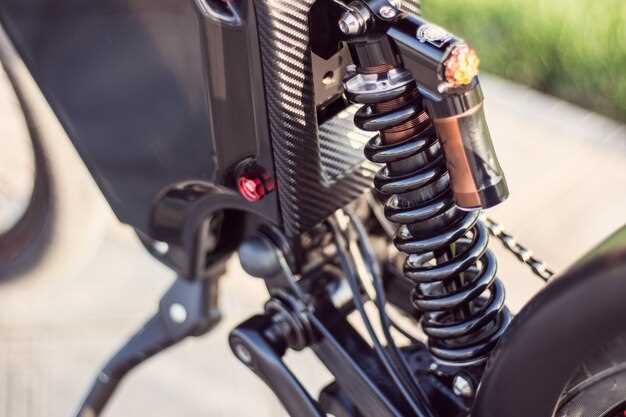
Maintaining your motorcycle in optimal condition requires regular attention to various components, with the battery being one of the most critical elements. A reliable battery ensures that your bike starts smoothly and performs efficiently, making it essential for the overall health of your motorcycle. Over time, however, even the best batteries can wear out, leading to potential issues that every rider should be aware of.
Understanding the signs that indicate it’s time to replace your motorcycle battery can save you from unexpected breakdowns and costly repairs. Factors such as age, performance issues, and visual inspections play a crucial role in determining when maintenance is necessary. Ignoring these signals can not only impair your riding experience but also compromise your safety on the road.
In this article, we will explore the key indicators that suggest it’s time to invest in a new battery, along with tips for proper maintenance to extend the lifespan of your motorcycle’s power source. By being proactive and attentive, you can ensure a reliable ride every time you hit the road.
Identifying Symptoms of a Failing Battery

Recognizing the signs of a failing motorcycle battery is crucial for ensuring your bike’s performance and reliability. Regular maintenance can prolong battery life, but even with proper care, batteries will eventually degrade. Here are some key symptoms to look out for:
1. Slow Engine Crank: One of the most noticeable signs of a failing battery is difficulty starting your motorcycle. If the engine cranks slowly or requires multiple attempts to start, this may indicate reduced battery power.
2. Dimming Lights: If you notice that your motorcycle’s headlights or dashboard lights become dim, this could signal a weak battery. A healthy battery should provide consistent voltage, ensuring that all electrical components function properly.
3. Electrical Issues: Malfunctioning electrical systems, such as faulty signals, non-working gauges, or erratic instrument readings, can also point to a failing battery. These problems often stem from insufficient voltage supply.
4. Corrosion on Terminals: Inspect the battery terminals for any signs of corrosion. A buildup of grime or acid can interrupt the electrical flow and hinder the battery’s performance, indicating it may need replacing soon.
5. Age of the Battery: The average lifespan of a motorcycle battery ranges between three to five years. If your battery is approaching or has surpassed this age, it is wise to consider a replacement, even if no obvious symptoms are present.
6. Swollen Battery Case: Physical deformities in the battery, such as a swollen or bulging case, may suggest internal damage. This condition often results from overheating or excessive charging and is a sign that the battery must be replaced immediately.
By remaining vigilant and recognizing these symptoms, you can address battery issues before they lead to more significant problems and enjoy a smooth riding experience.
Steps for Maintaining Your Motorcycle Battery

Proper maintenance of your motorcycle battery is essential to ensure longevity and optimal performance. Start by regularly checking the battery’s charge level; a voltmeter can help you monitor the voltage. A fully charged battery should read between 12.6 to 12.8 volts. If the voltage drops below 12.4 volts, it’s time to charge the battery.
Inspect the battery terminals for corrosion, which can impede electrical connections. Clean any buildup with a mixture of baking soda and water, using a soft brush to avoid damaging the terminals. After cleaning, apply a thin layer of petroleum jelly to prevent future corrosion.
Ensure the battery is securely mounted to minimize vibrations while riding, as excessive movement can damage internal components. Whenever you change the battery, make sure to use a replacement that matches the specifications of the original battery to avoid any compatibility issues.
Check the electrolyte levels in lead-acid batteries regularly. If the levels are low, add distilled water to bring them back up to the recommended level. Be cautious not to overfill, as this can lead to overflow and damage during charging.
If you plan to store your motorcycle for an extended period, remove the battery and keep it in a cool, dry place. Use a battery maintainer or trickle charger during storage to keep it charged. This practice will help reduce the chances of sulfation and extend the life of the battery.
Regularly test the battery’s performance, especially before long rides or the riding season begins. By following these maintenance steps, you can significantly reduce the likelihood of needing to change your motorcycle battery too frequently.
Guide to Safely Changing Your Motorcycle Battery
Changing your motorcycle battery is an essential part of maintenance that ensures optimal performance. Follow these steps to safely change your battery:
1. Gather Necessary Tools: Before beginning, ensure you have the right tools. You will typically need a wrench or socket set, a screwdriver, and safety gloves. Having a multimeter handy for testing the new battery can also be beneficial.
2. Prepare the Motorcycle: Park your motorcycle on a stable surface and turn off the ignition. If possible, remove the key from the ignition to prevent any accidental starts during the change process.
3. Disconnect the Old Battery: Start by removing the negative (-) terminal first. This reduces the risk of short-circuiting. Once the negative terminal is off, proceed to disconnect the positive (+) terminal. Make sure to store the connectors safely so they don’t touch each other.
4. Remove the Old Battery: Carefully lift the old battery out of its compartment. Note its orientation as you will need to position the new battery the same way.
5. Clean the Battery Area: Before inserting the new battery, clean the battery terminals and the surrounding area to remove any corrosion or dirt that may hinder performance.
6. Insert the New Battery: Place the new battery in the compartment, ensuring it is positioned correctly. Secure it to hold it in place as you connect the terminals.
7. Connect the New Battery: Start by connecting the positive (+) terminal first. Ensure it is tightened properly to avoid any loose connections. Follow with the negative (-) terminal, ensuring a secure fit as well.
8. Test the Battery: After connecting, conduct a quick test. Turn on the ignition to ensure that all electrical components are functioning as expected. If you have a multimeter, check the voltage as well.
9. Dispose of the Old Battery Properly: Do not discard the old battery in regular trash. Instead, take it to a recycling facility or return it to a shop that offers battery disposal services. This is important for environmental safety.
Following these steps will help you change your motorcycle battery safely and efficiently. Regular battery maintenance can extend its lifespan and enhance your riding experience.












